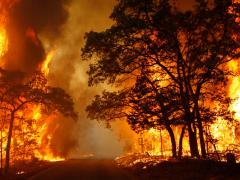Scientists Explore Cutting-Edge Multi-Year ENSO Forecasts Using Climate Model
El Niño and La Niña events show a wide range of durations over the historical record, but whether event duration can be predicted has remained largely unknown. Since longer-lived, multi-year El Niño and La Niña events could extend their climate and socioeconomic impacts, it’s important to have accurate predictions of their durations with the longest lead times possible.
A new study published in the Journal of Climate, funded in part by NIDIS through the NOAA Climate Program Office's (CPO's) Modeling, Analysis, Predictions, and Projections (MAPP) program, uses the Community Earth System Model, version 1 (CESM1) to show that event duration is highly predictable. The authors conclude that there is the potential to extend 12-month operational forecasts of El Niño and La Niña events by one additional year.
Authors Xian WU (University of Texas at Austin), Yuko M. Okumura (University of Texas at Austin), Clara Deser (National Center for Atmospheric Research), and Pedro N. DiNezio (University of Colorado, Boulder) found that CESM1 predicts the duration of individual El Niño and La Niña events with lead times ranging from 6 to 25 months. Forecasts using November initial conditions, near the first peak of El Niño or La Niña, can skillfully predict whether the event continues through the second year with 1-year lead time. In addition, they found that the occurrence of multi-year La Niña events can be predicted even earlier with lead times up to 25 months, especially when they are preceded by strong El Niño. However, further research is needed to explore the model and seasonal dependencies of El Niño and La Niña event duration predictability.
This study highlights the benefit of extending the forecasts, even for selected models and selected initialization months. Multi-year El Niño and La Niña forecasts will provide a new basis for predictions of prolonged climate impacts, such as persistent drought in the southern United States and widespread flooding in Australia during multiyear La Niña events.







